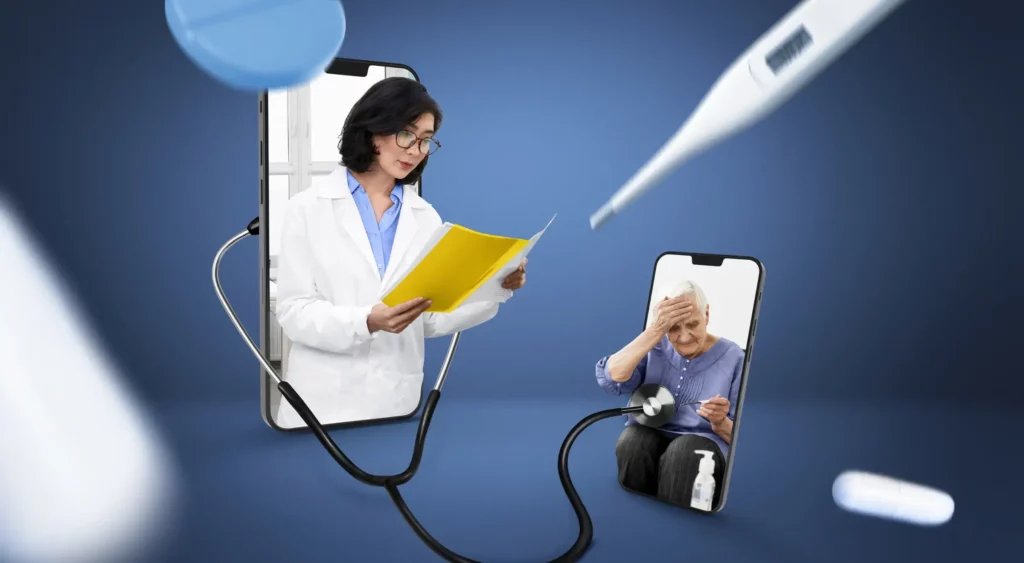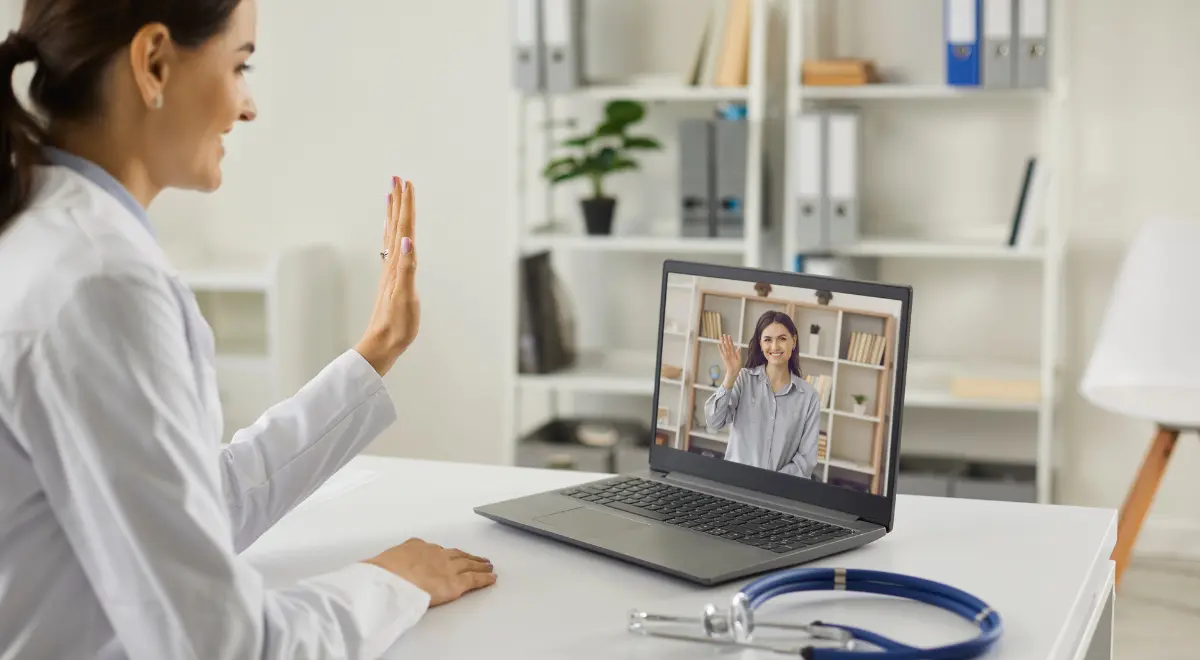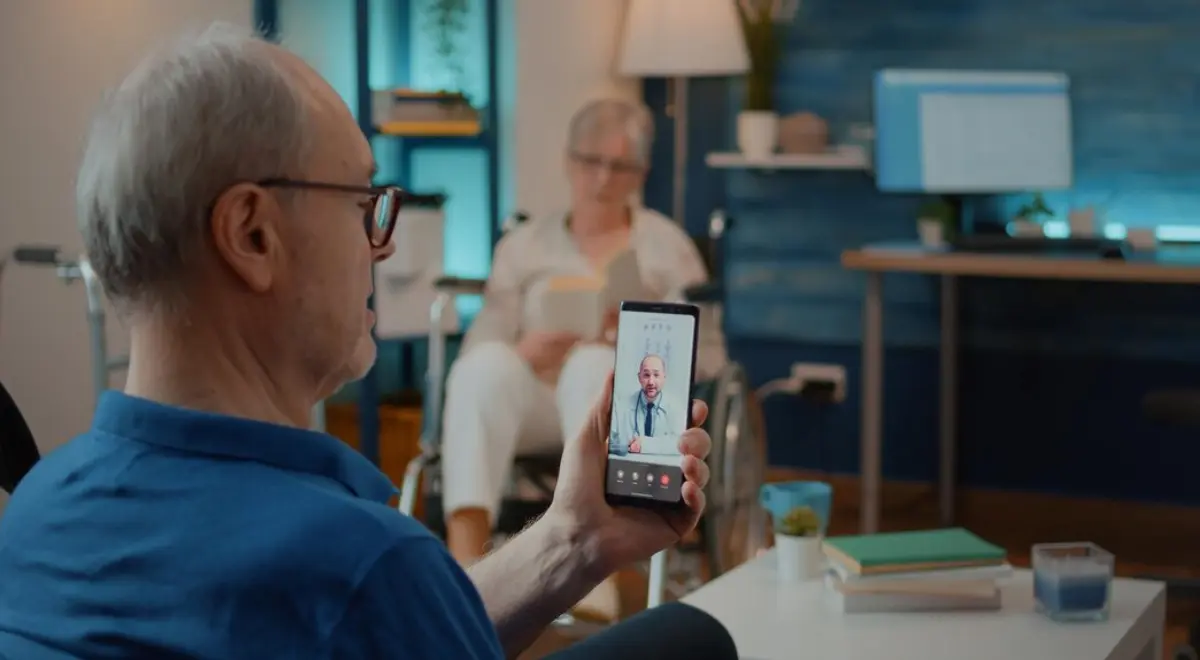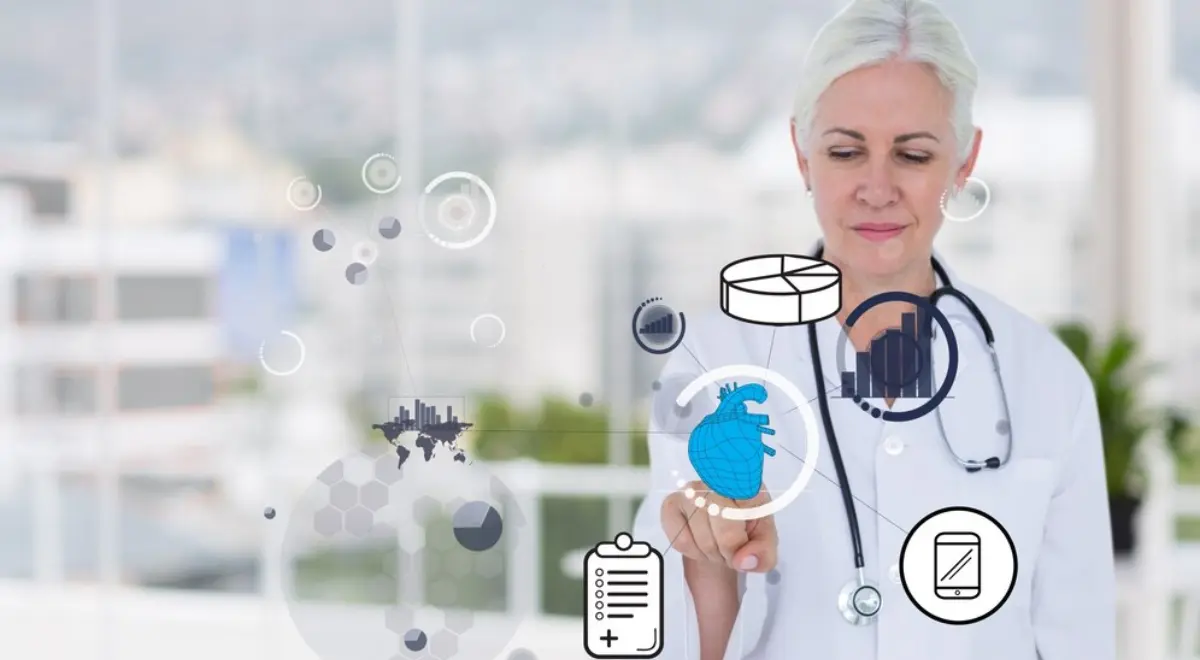Why Use Remote Patient Monitoring in Healthcare?

Remote patient monitoring in healthcare allows practices to monitor, gather and analyze the data of patients and electronically transmit the data to the healthcare providers for assessment and helping with treatments. Remote Patient Monitoring technology is a one-way delivery system to transfer the data between patients and clinicians.
Table of Contents
ToggleWidespread Benefits of Remote Patient Monitoring Technology
Chronic conditions need constant monitoring and attention. Check out the below points to understand why you use remote patient monitoring in your practice for better efficiency.
Weight Management for any Heart Failure
One of the most critical health problems for people in America is obesity. Obesity causes heart diseases, high blood pressure, and a few types of cancer. The good news is, with remote patient monitoring in healthcare, cardiologists can assist patients by providing them with proper advice to help them in reducing their weight.
Asthma Management for Asthmatic Patients
Asthma is incurable but is treatable. With remote patient monitoring, pulmonologists can easily track the activities of asthmatic patients and can prescribe them medications and respiratory exercises.
Glucose Monitoring
For diabetic patients, measuring the changes in blood sugar levels is essential. Through remote patient monitoring, it becomes easier to note the fluctuations between high and low blood sugar levels for a clear picture of patients’ diabetes management.
What Are Some Helpful Remote Patient Monitoring Devices?
1. Remote Blood Pressure Monitor Cuff
It is an easy-to-use remote patient monitoring device that helps patients calculate their heart rate and track their blood flow data to transfer it safely to their physicians. This device is mainly used for heart-related chronic conditions patients.
2. Remote Pulse Oximeter
A remote patient monitoring device helps patients track blood oxygen flow in their red blood cells. It is a device used for asthma and pneumonia patients.
3. Remote Blood Glucose Meter
It is a remote patient monitoring device that helps measure the fluctuations rate in the blood sugar level of a patient. It is a device used for patients who have diabetes.
4. Thermometer
It is a remote patient monitoring device that helps check the patients’ body temperature remotely. Physicians keep track of patient body temperature changes for better treatment.
5. Remote Weight Measuring
For patients suffering from weight-related chronic conditions, this remote patient monitoring device is very useful for measuring and tracking their weight changes. It is a device that helps patients suffering from obesity track their weight and be safe from diabetes, heart-related problems, and some types of cancer.
Also Read: Remote blood pressure monitoring: A simple (but complete) guide
Key Components of Remote Patient Monitoring System
Remote Patient Monitoring Devices
The practices require remote patient monitoring devices to track the required health-related data to provide the patients with proper care.
Remote User-Access Portal
The data collected from the Remote Patient Monitoring devices will be useless if the practices cannot view the data on the access device. A connection device linked with the remote patient monitoring device is required to access the patients’ data for different processes.
Remote Software
Though hardware devices are necessary for the practices, the remote patient monitoring device and remote user-access portal require good software to make the patients’ data understandable.
Benefits of Remote Patient Monitoring For Your Practice
Improved Patients’ Self-Management
With the easy-to-use remote patient monitoring devices and chronic care patients’ engagement to get educated on how to access the devices to keep track of their health efficiently, it got easier for the practices to give proper chronic care.
Improved Data Driven Decision-Making
With remote patient monitoring in healthcare, physicians can make important decisions on patients’ chronic conditions with the help of patients’ clinical data. And offer them good care.
Reduction in Cost for both Patient and Practice
Remote patient monitoring in healthcare has had a good effect on reducing unnecessary hospital readmissions. Remote patient monitoring helps reduce the high costs of care for non-needful services, enabling monitoring of patients in their homes.
Increase in Net Revenue Costs for Practices
Due to the cost of a reduction in non-needful services, remote patient monitoring enables more opportunities for the practices to increase their net patient revenue by facing their competition and settling their other costs.
Prevents the Spread of Infectious Diseases and other Hospital Infections
With the help of remote patient monitoring, there is no need for patients to visit hospitals daily. This helps contain the spread of hospital infections, mainly for serious or contagious conditions.
More Referral Opportunities
Remote patient monitoring leads to more referrals for the practices providing good care for the patients with chronic conditions. It will benefit them for their competitive advantage, increase in new admissions, and patient retention.
Clinical Staff Shortages
Remote patient monitoring enables clinicians to monitor the patients from anywhere and handle the shortage or unavailability of the appropriate support staff.
Future of Remote Patient Monitoring in Healthcare
During the Covid-19 pandemic, remote patient monitoring became popular for keeping a track record of patients’ healthcare virtually, even though those were the times when physical visits of the patient were impossible for the physicians.
With the help of remote patient monitoring, we have come very far in terms of technology up-gradation for virtual healthcare, competitive advantage, and revenue generation. Now, patients with chronic conditions are willingly engaged in tracking their health-related activities for better chronic care decisions.
The improvement in the medical solutions has resulted in more effective medical results by the practices for their patients.
With the increase in remote patient monitoring technology, health practices will get more flexible to provide the patients with a good treatment for their well-being.
And now, after the covid-19 pandemic, remote patient monitoring is still frequently practiced by clinicians and patients, resulting in better care management. But both clinician and patient should be aware of the technological innovations which happen on a timely basis.
Benefits of HealthArc Remote Patient Monitoring
Improved Patient Outcomes
HealthArc’s remote patient monitoring technology helps clinicians monitor patients’ chronic care data efficiently with the help of remote patient monitoring devices, leading to better patient healthcare results.
Generating Additional Revenue
HealthArc’s remote patient monitoring method helps practices gain additional revenue by compensating less due to reduced readmissions.
Standards of Privacy
HealthArc ensures an adequate security standard for data acquired through remote patient monitoring. HealthArc team ensures an integrated approach of security with the practices, patients, and all the third parties involved.
Improve your Practice Revenue with HealthArc – Remote Patient Monitoring
With HealthArc remote patient monitoring technology, 100 practices have gained 120K USD additional revenue. You can improve your practice revenue with HealthArc’s remote patient monitoring device.

Quick Facts about Remote Patient Monitoring
Remote Patient Monitoring is a Valuable Resource
Remote patient monitoring is a valuable resource for medical practices. Due to covid-19, this method became a profit gainer for the practices. Remote patient monitoring not only reduces the compensation rates at the time of readmissions but also reduces the cost of chronic care management.
Remote Patient Monitoring experiences a good Adaptability Rate
After the pandemic, it is again back to on-practice service providers. Remote patient monitoring has become a perfect solution for post-operative care at home for patients with chronic conditions.
Remote Patient Monitoring builds a Healthy Relationship
Remote patient monitoring is not only a technology used to monitor good health but also builds a healthy relationship between the patients and service providers, complementing real interactions through virtual counseling sessions.
FAQ
The top 5 most frequently asked questions in remote patient monitoring are:
1. Who can provide remote patient monitoring services?
Remote patient monitoring is provided by qualified healthcare professionals (QHPs). Clinical staff can provide and manage the remote patient monitoring solutions under the supervision of the practices.
2. Who can receive remote patient monitoring services?
Patients with 2 or more chronic conditions can receive remote patient monitoring services only when prescribed by the service providers.
3. How is remote patient monitoring reimbursed?
The Centre of Medicare Services (CMS), 21 state Medicaid programs, and private payers pay for remote patient monitoring.
4. Can remote patient monitoring be billed concerning chronic care management?
Yes, a provider can bill for both in the same month because the Center of Medicare Services (CMS) recognizes that remote patient monitoring services complement chronic care management services.
5. Which state of disease can be managed with Remote Patient Monitoring?
The state of diseases managed with remote patient monitoring includes- obesity, chronic obstructive pulmonary diseases (COPD), congestive heart failure (CHF), diabetes, and hypertension.
Conclusion
Remote patient monitoring allows the practices to get a full picture of patients’ chronic conditions and symptoms by making the providers perform their job efficiently.
At present, healthcare centers have become more patient-centric, the main reason for remote patient monitoring becoming an important method to be used by healthcare for their patients.
Schedule a demo today to learn more about billing and reimbursement principal care management CMS CPT codes.
Most recent blogs
Categories
- Behavioral Health Integration
- Cellular Remote Patient Monitoring
- Chronic Care Management
- Chronic Care Management Billing
- Chronic Care Management CPT Codes
- Chronic Care Management Program
- Chronic Care Management Software
- Digital Health Platform
- Principal Care Management
- Principal Care Management CPT Codes
- Remote Monitoring Devices
- Remote Patient Care
- Remote Patient Monitoring
- Remote Patient Monitoring Billing
- Remote Patient Monitoring CPT Codes
- Remote Patient Monitoring Devices
- Remote Patient Software
- Remote Therapeutic Monitoring
- Remote Therapeutic Monitoring Billing
- Remote Therapeutic Monitoring CPT Codes
- Telemedicine & RPM
- Transitional Care Management
- Transitional Care Management Billing
- Transitional Care Management CPT Codes
Related Posts
- July 23, 2024 | Read Time: 8 mins
HealthArc Vs. Prevounce: Which One To Choose?
- July 4, 2024 | Read Time: 6 mins
Remote Patient Monitoring for Alzheimer’s
- June 21, 2024 | Read Time: 5 mins






